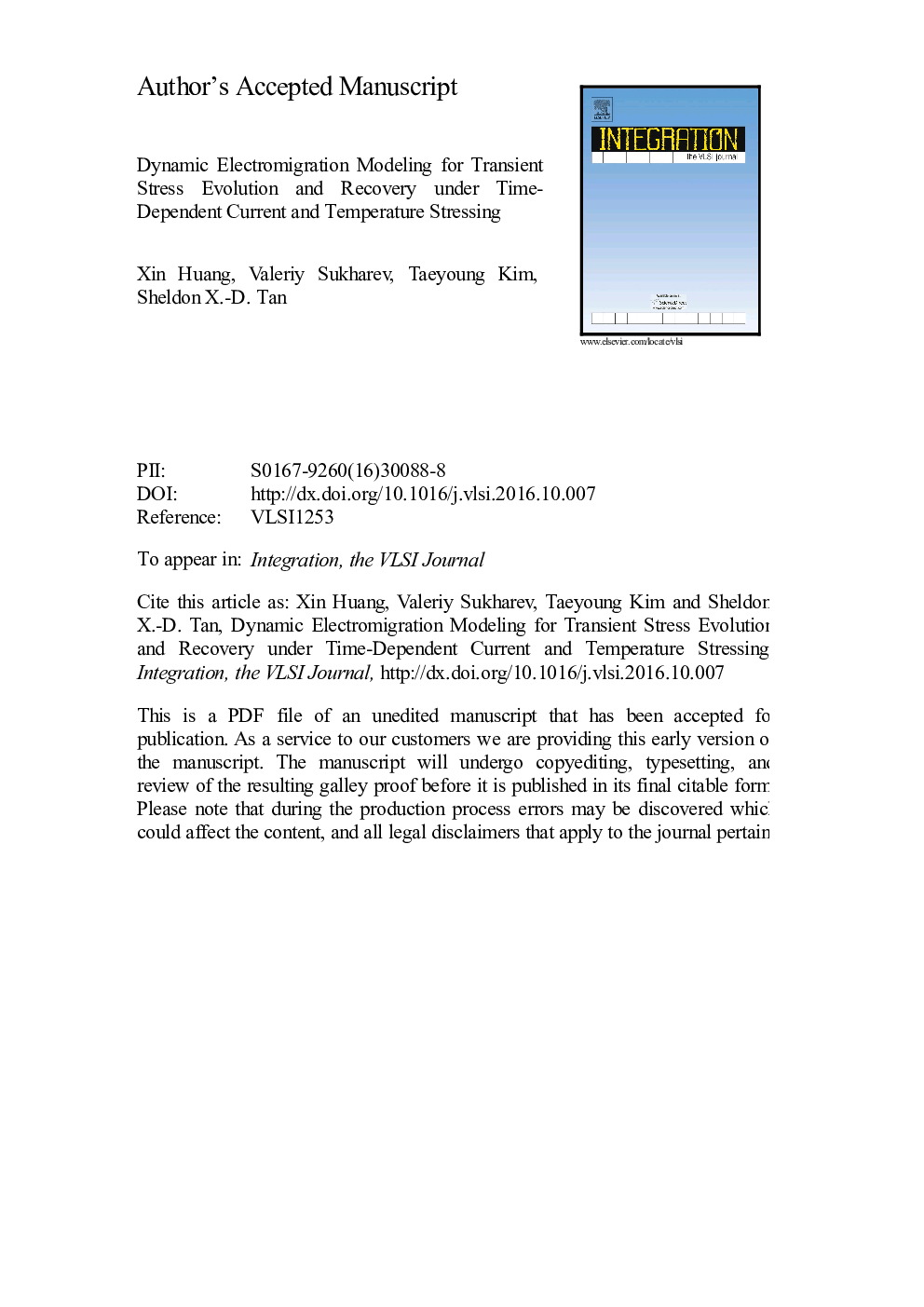| Article ID | Journal | Published Year | Pages | File Type |
|---|---|---|---|---|
| 4970650 | Integration, the VLSI Journal | 2017 | 12 Pages |
Abstract
Electromigration (EM) has been considered to be the dominant back end of line (BEOL) reliability issue for current and future VLSI technologies. Current EM reliability analysis is overloaded by over-conservative and simplified EM models. Particularly the transient recovery effect in the EM-induced stress evolution kinetics has never been modeled properly in all the existing analytical EM models. In this article, we propose a new physics-based dynamic compact EM model, which for the first time, can accurately predict the transient hydrostatic stress recovery effect in a confined metal wire. The evolution of preexisted void volume and the corresponding metal line resistance change can be further derived based on the stress evolution. The new dynamic EM model is based on the direct analytical solution of one-dimensional Korhonen's equation with load driven by any unipolar or bipolar current waveforms under varying temperature. We show that the EM recovery effect can be quite significant even under unidirectional current loads. This recovery/healing process is sensitive to temperature, and higher temperatures lead to faster and more complete recovery. Such effect can be further exploited to extend the lifetime of the interconnect wires if the chip current or power can be properly regulated and managed. As a result, the new dynamic EM model can be incorporated with existing dynamic thermal/power/reliability management and optimization approaches, devoted to reliability-aware optimization at multiple system levels (chip/server/rack/data centers). Presented results show that the proposed EM model agrees very well with the numerical analysis results under any time-varying current density and temperature profiles.
Related Topics
Physical Sciences and Engineering
Computer Science
Hardware and Architecture
Authors
Xin Huang, Valeriy Sukharev, Taeyoung Kim, Sheldon X.-D. Tan,
